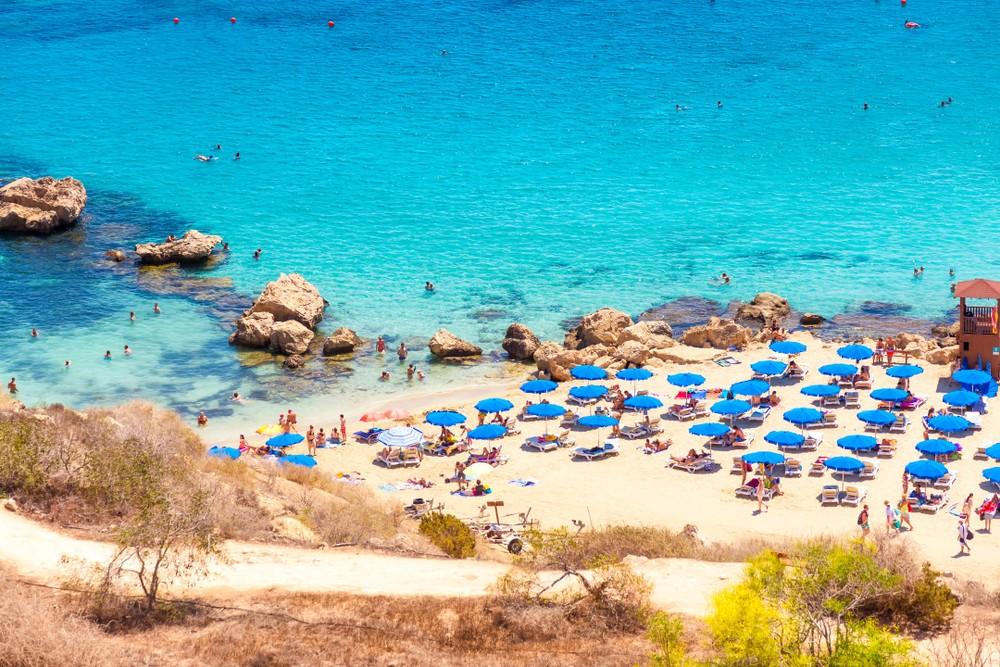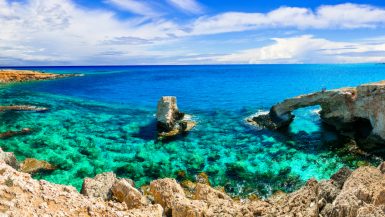The island of Cyprus is located south of the Turkish coast in the eastern Mediterranean and has been one of the most popular holiday destinations in Europe for many decades. The country scores with fantastic beaches and thousands of years of history.
It is therefore an ideal holiday destination for both beach travellers and guests interested in culture. On average, the sun shines on the “Island of Aphrodite” 340 days a year and even during the winter months the thermometer rarely falls below 10°C in the coastal regions. The pleasant climate and the fantastic landscape in the interior of the island attract more and more hikers and mountain bikers every year and are reasons why Cyprus has now established itself as a year-round destination.
Colloquially, one hears the expressions “Greek and Turkish part” again and again, but this is not politically correct. The Greek-speaking Republic of Cyprus comprises the larger, southern part of the island, while the “Turkish Republic of Northern Cyprus” is only an internationally unrecognised de facto state.
The border runs directly through the capital Nicosia, but can now be crossed without any problems, even though UN soldiers are still stationed at the buffer zone.
Since the Turkish invasion of Cyprus in 1974, the image of the country has changed a lot. For example, some of the major tourist areas of Northern Cyprus, such as Famagusta, became ghost towns and restricted areas, while numerous new holiday centres developed in the south. With the two airports in Larnaca and Paphos, the Republic of Cyprus has an excellent infrastructure without long transfer times to the hotels.
Larnaca
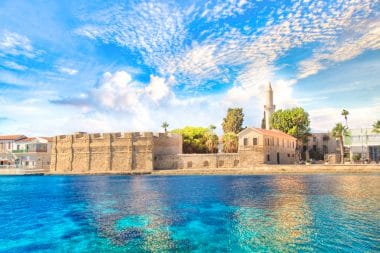
Larnaca is a suitable destination for holidaymakers who appreciate a combination of city and beach life. The town with its approximately 50,000 inhabitants offers all the facilities for a pleasant stay. In addition, the famous Finikudes Beach with its kilometre-long, palm-lined promenade attracts visitors to relax and stroll. Divers also get their money’s worth in the sea off the coast. The MS Zenobia, which sank here in 1980, is one of the top 10 diveable wrecks in the world and is extremely popular with fans of this sport. The 3000-year history of the region is visible in many places – one of the most important sights of the city is the Byzantine Lazaros Church from the 9th century.
Agia Napa

Agia Napa on the east coast was a small idyllic fishing village until the beginning of the 1980s, which developed into an absolute party stronghold after the division of the island. Countless shops, bars and restaurants provide entertainment for the adventurous tourists. However, the long sandy beaches that can be found here also attract many families and couples, so the crowd here is very mixed. Near Agia Napa is one of the largest water parks in Europe and the dolphinarium also attracts countless visitors every day.
Limassol
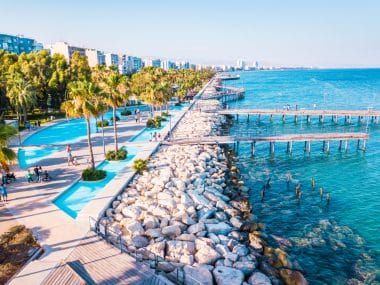
Limassol , on the southern coast of Cyprus, is the country’s most important port city. The hotel complexes are mostly located on the eastern outskirts of the city along the beach promenade and usually offer attractive pool facilities, as the region has no real dream beaches. However, Limassol has an interesting and lively old town, which is ideal for a leisurely stroll, and the medieval castle, which towers high above the harbour and now houses a museum, is also worth a visit. Limassol is also a perfect starting point for tours to the Troodos Mountains and to the almost 2000 m high Olympus.
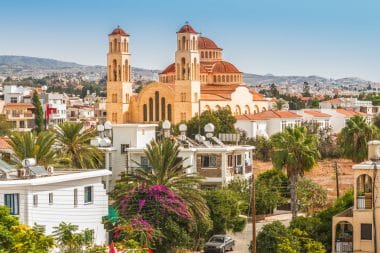
Paphos, located in the southwest of the island, was the European Capital of Culture in 2017 and was “spruced up” for the occasion. Tourism has only developed in the area since the opening of the airport in the 1980s, so the rural character has fortunately been partially preserved. In the cityscape you can find traces of antiquity and the Middle Ages everywhere, because the region was already settled around 5000 years ago, as excavations of the cult site in honor of a fertility goddess prove.
The Kato Paphos Archaeological Park is one of the most important sights of Cyprus and is on the UNESCO World Heritage List. On display are monuments from a wide variety of eras, most of which date back to the Roman period. These include, for example, the world-famous floor mosaics from several Roman villas. A holiday in Paphos and the surrounding area is recommended for travellers interested in history and beach lovers alike, as Coral Bay is also one of the most beautiful beaches on the island. The picturesque bay surrounded by cliffs is located about 6 km north of the city.
The two towns of Polis and Protaras are also suitable for a quiet, tranquil holiday. Polis is very family-friendly with a beautiful pebble beach and has retained its original, very Greek flair. The local eucalyptus forest is also impressive here.
For a perfect beach holiday, Protaras near Agia Napa is also recommended, where fine sand and crystal clear waters await sun-seekers. If you don’t want to miss out on entertainment and nightlife, you will find it in Agia Napa, 12 km away.
Cyprus is a beautiful destination with great beaches, pretty towns and an extensive cultural offer. Where Aphrodite once emerged from the sea and came ashore, it is now a wonderful place to spend a holiday.

